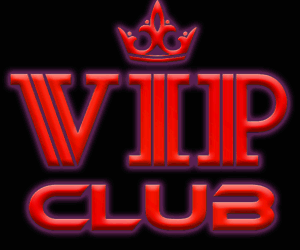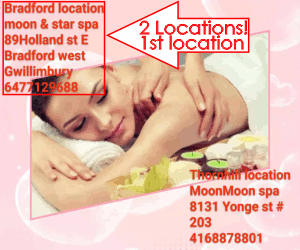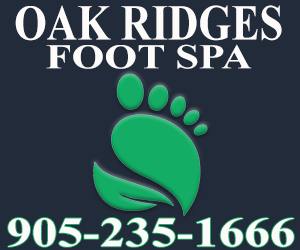Candice Nelson had been a massage therapist for years when she decided to try massage cupping — a practice that creates vaccuum pressure inside of a cup to pull stagnant blood and toxins out of the tissue a fascia — when other methods were not relieving her sciatica issues and shoulder pain for a long period of time.
The owner of Pure Bliss Massage and Waxing in Windsor had been looking for ways to fulfill the needs of her clients and Windsor residents and was hooked when just a cupping session took away her pain for a longer period of time than deep tissue massage.
"I'm totally in love with it," she said.
Because it had worked for her, Nelson began exploring the possibility of taking classes to become certified and pass that feeling on to her clients. She took a class from a teacher who taught at the Healing Arts Institute in Fort Collins, where she had previously studied massage therapy, and began offering massage cupping to her clients this year.
“Every person is different, and you have to try it and see if it works for what is going on in your body,” Candice NelsonMassage therapist, owner
As Nick Macklin lay on the massage table in Pure Bliss Massage and Waxing Thursday afternoon, Nelson placed small cups along his back, squeezing a manual pump attached to a hose on the cups to suck the air out of them.
These manual cups she said, are more intense than the machine she uses and prefers over the manual massage cupping, which she said she rarely does now that she has the machine. The cupping machine pulses, while the manual cups simply pull consistently, so Nelson said she had never left on more than three minutes. The machine's pulsing, she said, relaxes the muscles and so can be left on longer.
Nelson placed larger cups attached to the machine on Macklin's upper back, and then moved them slowly down his back, the lack of air pulling his skin up into the cup, before removing them.
Macklin said cupping has made a big difference in his muscle soreness from being a lineman.
"I love it," he said.
In addition to placing and moving the large cups, Nelson hooks smaller cups to the cup machine and glides over her clients' backs slowly,using them to massage.
"This is a substitute, in my opinion, for deep tissue work," she said.
The suction pulls toxins to the surface, Nelson said, and can loosen muscles and break up scar tissue. Stagnant blood is pulled upward, she said, which causes new blood to come into areas that may have been experiencing pain previously. She urges her clients to drink water after the process to wash the toxins and old blood sucked up by the cups away.
While she says many people may know of cupping from watching the summer Olympics and seeing athletes with marks on their backs, the practice has a long history.
The marks on Michael Phelps — whose cupping led to more attention for the practice — are also more severe than they are with the method she uses, Nelson said, because his body goes through more strain as an Olympian.
"That is a lot more intense than what I do," she said with a laugh.
She also said the marks from massage cupping will be a lighter color only last two or three days.
Several of her clients who are athletes feel it has made a huge difference in their mobility and lessened their pain, Nelson said.
Barry Braun, a professor and department head at the Colorado State University Health and Exercise Science department, said although evidence appears to be lacking on its effectiveness in aiding recovery time, if people say it makes them feel better, "who can argue with that?"
Nelson says many people are skeptical of cupping, as well as acupuncture and chiropractic work, and she knows massage cupping is not for everyone.
"Every person is different, and you have to try it and see if it works for what is going on in your body," she said.
One misconception Nelson said she has heard often is that the circular marks left over after cupping are bruises.
Bruises, she said, are caused by an impact, while the circular marks left from massage cupping are caused by suction.
"It's not a bruise," she said.
Pure Bliss Massage and Waxing celebrated five years in Windsor this year, and Nelson said she is glad she chose Windsor to open her practice.
"It's been such a good experience here," she said.
Massage cupping has helped Nelson, as well as her clients.
"What sparked me is that maybe I can extend my massage career by doing this and saving my hands," she said.
Using massage cupping, which Nelson said she feels can be a replacement for deep tissue massage, allows her to move cups across a patient's back rather than digging in with her hands.
"After doing this for 12 years your hands get tired," she said.
But the way her clients feel is one of the biggest reasons for Nelson to use massage cupping.
"I love helping people," she said.
Let's block ads! (Why?)
The owner of Pure Bliss Massage and Waxing in Windsor had been looking for ways to fulfill the needs of her clients and Windsor residents and was hooked when just a cupping session took away her pain for a longer period of time than deep tissue massage.
"I'm totally in love with it," she said.
Because it had worked for her, Nelson began exploring the possibility of taking classes to become certified and pass that feeling on to her clients. She took a class from a teacher who taught at the Healing Arts Institute in Fort Collins, where she had previously studied massage therapy, and began offering massage cupping to her clients this year.
“Every person is different, and you have to try it and see if it works for what is going on in your body,” Candice NelsonMassage therapist, owner
As Nick Macklin lay on the massage table in Pure Bliss Massage and Waxing Thursday afternoon, Nelson placed small cups along his back, squeezing a manual pump attached to a hose on the cups to suck the air out of them.
These manual cups she said, are more intense than the machine she uses and prefers over the manual massage cupping, which she said she rarely does now that she has the machine. The cupping machine pulses, while the manual cups simply pull consistently, so Nelson said she had never left on more than three minutes. The machine's pulsing, she said, relaxes the muscles and so can be left on longer.
Nelson placed larger cups attached to the machine on Macklin's upper back, and then moved them slowly down his back, the lack of air pulling his skin up into the cup, before removing them.
Macklin said cupping has made a big difference in his muscle soreness from being a lineman.
"I love it," he said.
In addition to placing and moving the large cups, Nelson hooks smaller cups to the cup machine and glides over her clients' backs slowly,using them to massage.
"This is a substitute, in my opinion, for deep tissue work," she said.
The suction pulls toxins to the surface, Nelson said, and can loosen muscles and break up scar tissue. Stagnant blood is pulled upward, she said, which causes new blood to come into areas that may have been experiencing pain previously. She urges her clients to drink water after the process to wash the toxins and old blood sucked up by the cups away.
While she says many people may know of cupping from watching the summer Olympics and seeing athletes with marks on their backs, the practice has a long history.
The marks on Michael Phelps — whose cupping led to more attention for the practice — are also more severe than they are with the method she uses, Nelson said, because his body goes through more strain as an Olympian.
"That is a lot more intense than what I do," she said with a laugh.
She also said the marks from massage cupping will be a lighter color only last two or three days.
Several of her clients who are athletes feel it has made a huge difference in their mobility and lessened their pain, Nelson said.
Barry Braun, a professor and department head at the Colorado State University Health and Exercise Science department, said although evidence appears to be lacking on its effectiveness in aiding recovery time, if people say it makes them feel better, "who can argue with that?"
Nelson says many people are skeptical of cupping, as well as acupuncture and chiropractic work, and she knows massage cupping is not for everyone.
"Every person is different, and you have to try it and see if it works for what is going on in your body," she said.
One misconception Nelson said she has heard often is that the circular marks left over after cupping are bruises.
Bruises, she said, are caused by an impact, while the circular marks left from massage cupping are caused by suction.
"It's not a bruise," she said.
Pure Bliss Massage and Waxing celebrated five years in Windsor this year, and Nelson said she is glad she chose Windsor to open her practice.
"It's been such a good experience here," she said.
Massage cupping has helped Nelson, as well as her clients.
"What sparked me is that maybe I can extend my massage career by doing this and saving my hands," she said.
Using massage cupping, which Nelson said she feels can be a replacement for deep tissue massage, allows her to move cups across a patient's back rather than digging in with her hands.
"After doing this for 12 years your hands get tired," she said.
But the way her clients feel is one of the biggest reasons for Nelson to use massage cupping.
"I love helping people," she said.
Let's block ads! (Why?)






























































































